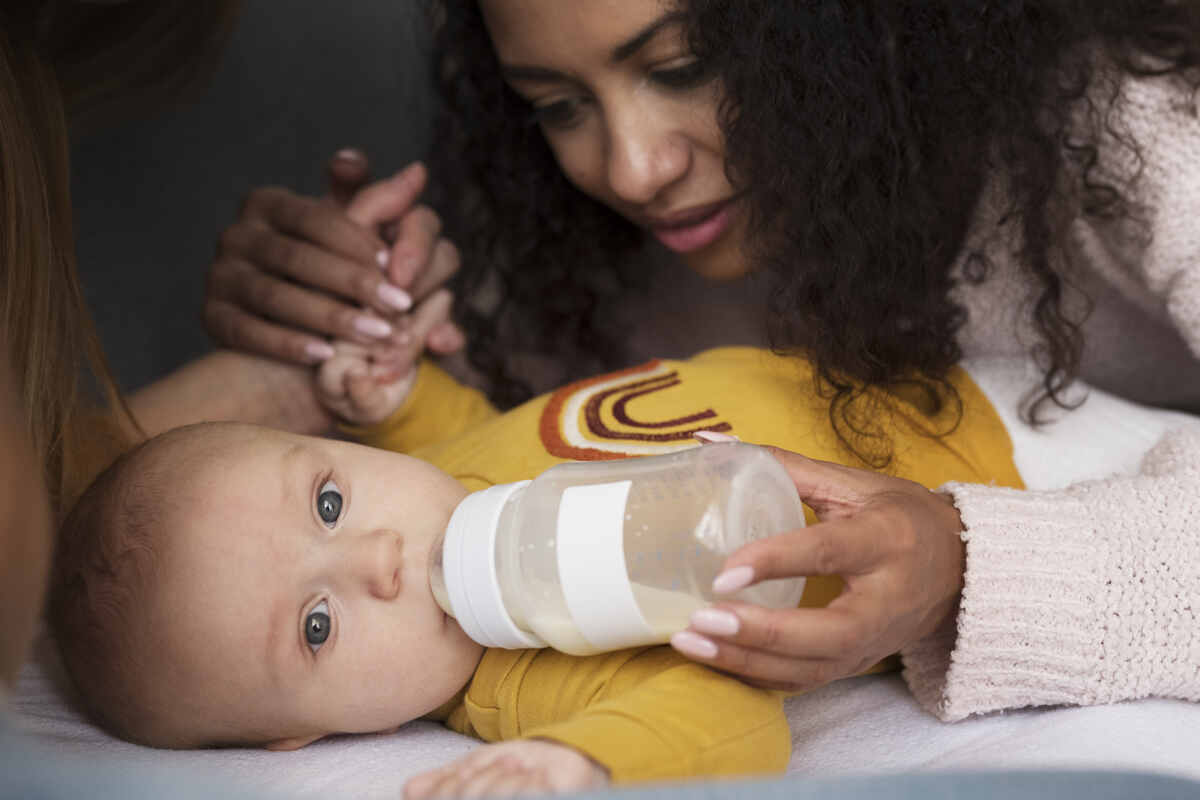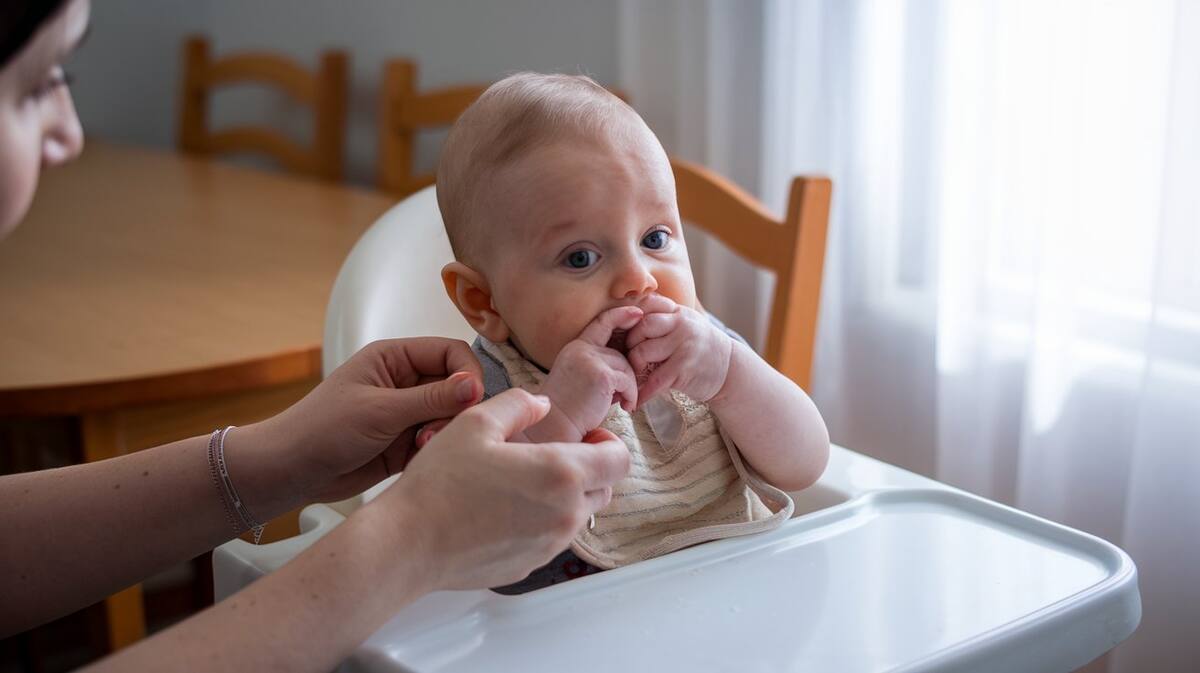Feeding your baby should be one of the most comforting moments of the day, but it can feel like everything’s going wrong when they start crying mid-bottle. If you’ve wondered how to soothe a baby crying while bottle feeding, know this: you’re not alone. And more importantly, it’s fixable.
Crying during feeds is common and can be compelled by various physical and emotional reasons. This guide will provide 10 proven tips to help calm your baby, identify potential triggers, and transform feeding time into a peaceful bonding experience.
1. Understand the Crying: It’s Not Always Hunger

Babies cry because they can’t say what’s wrong yet. If your little one cries during a bottle feed, the issue might be:
- Hunger (too much or too little)
- Gas or reflux discomfort
- Teething or illness
- Sensitivity to the nipple flow
- Overstimulation or tiredness
Look for early cues before the crying starts:
- Rooting
- Lip-smacking
- Turning toward the bottle
- Rubbing eyes or ears
- Arching their back
Understanding these signs helps you soothe a baby’s crying while bottle feeding before the meltdown begins.
2. Choose the Right Bottle and Nipple Flow
An inappropriate bottle or nipple can quickly frustrate your baby. Too fast, and they may choke or gulp air. Too slow, and they might work too hard to get milk, leading to tears.
Try this:
- Use age-appropriate, slow-flow nipples labelled “0m+” or “newborn.”
- Anti-colic bottles like Dr Brown’s, Philips Avent, or Tommee Tippee can reduce air intake.
- Mimic breastfeeding with wide-base nipples if you’re combo feeding.
3. Pause to Burp Mid-Feed and After
Trapped air causes gas, and gas causes tears. It’s as simple as that.
Burping techniques that work:
- Over the shoulder (classic!)
- Sitting upright on your lap
- Tummy-down across your knees
A single burp can shift your baby from fussy to content. Don’t skip it—even if they’re mid-feed.
4. Create a Calm Feeding Environment
Your baby feeds best when they feel safe and soothed.
Prep the space:
- Dim the lights
- Lower any loud noise (TV, people talking)
- Swaddle or use skin-to-skin contact
- Add soft white noise or lullabies
These subtle differences can make a difference when trying to soothe a baby crying while bottle feeding.
5. Feed Based on Cues, Not a Schedule
Babies aren’t clocks. Rigid timing can lead to cranky, over-hungry babies crying before the bottle touches their lips.
Watch for signs they’re ready:
- Sucking on fists
- Rooting
- Stirring from sleep
Feeding before crying begins helps prevent emotional distress that disrupts the feeding process.
6. Consider Reflux, Sensitivities, or Allergies
If your baby cries during and after every feed, there might be a medical issue.
Watch for:
- Frequent spit-up or arching back
- Mucus in stool
- Skin rashes
- Pulling away but still hungry
Talk to your pediatrician about:
- Infant reflux
- Cow’s milk protein allergy
- Switching to hypoallergenic formula
7. Add Gentle Movements and Soothing Sounds
Babies often respond well to rhythm and repetition.
Try:
- Rocking or swaying during the feed
- Upright feeding positions
- Humming, soft singing, or white noise
Also, experiment with paced bottle feeding—it mimics breastfeeding and gives your baby more control, reducing overwhelm.
8. Safely Test Different Bottles or Formulas
Not all bottles and formulas suit every baby.

Signs it’s time to switch:
- Persistent fussiness
- Gassiness or constipation
- Nipple rejection
Always consult your paediatrician before making changes, especially regarding formula. Look for bottles that reduce air bubbles and use venting systems.
9. Keep a Simple Feeding & Crying Log
Track the what, when, and how of each feed. Over time, you’ll notice patterns like:
- Crying after a particular formula
- Fussiness during specific times of day
- Symptoms after specific bottle types
Use a baby tracking app or a paper journal. When you visit the doctor, you’ll have valuable data ready.
10. Be Gentle With Yourself
Yes, this is hard. Feeding a crying baby can feel disheartening, but you’re doing your best—and that’s enough. If you’re Googling how to soothe a baby crying while bottle feeding, that means you care. You’re already a great parent. Keep breathing. This phase will pass, and soon, you’ll be a pro at spotting every cue before the first whimper.
Final Thoughts:
Feeding should be a calm, bonding experience, and it can be. Use these calming tips to soothe a baby crying while bottle feeding, and remember: a little trial-and-error is usual. Trust your instincts, stay patient, and reach out to your healthcare provider if unsure. You’re not alone—and every tear leads to more understanding.
Frequently Asked Questions (FAQs)
Why does my baby cry while drinking but still seem hungry?
It could be gas, reflux, or nipple frustration. Try burping, switching bottles, or feeding in a more upright position.
Should I stop feeding when my baby cries?
Yes. Pause, soothe them, then try again. Forcing a feed can make things worse.
Can formula cause fussiness?
Absolutely. Cow’s milk protein or ingredient sensitivity can lead to discomfort. Talk to your paediatrician before switching.
How do I know if the nipple flow is proper?
Coughing too fast. Frustrated sucking or early quitting too slow.
Is it normal for babies to cry during feeds?
Some crying is normal, but consistent issues should be addressed, especially with spit-up, arching, or rashes.












